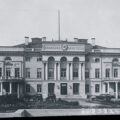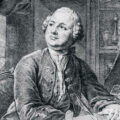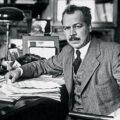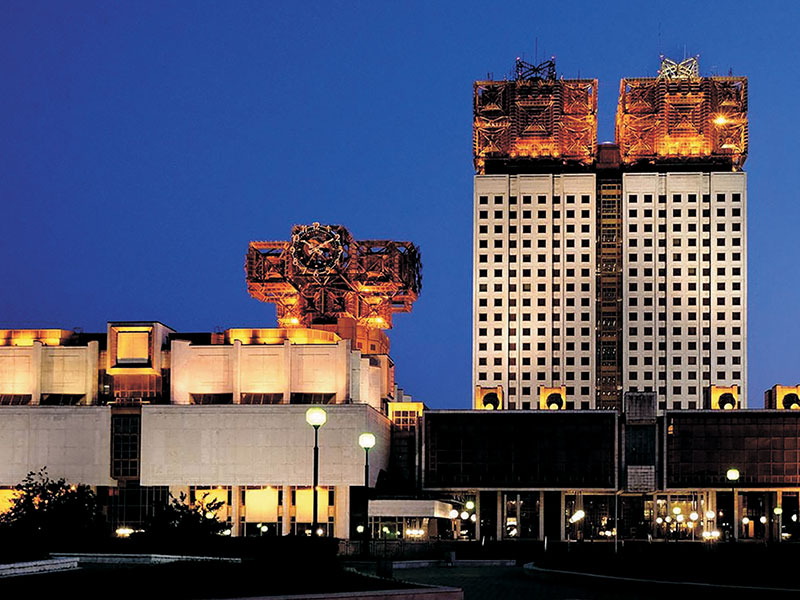
The Russian Academy of Sciences is one of the few all-Russian institutions that has a continuous three-hundred-year history. The Academy has repeatedly changed its names, been reformed, but has never been abolished or liquidated.
THE BIRTH OF THE ACADEMY
The task of «multiplying knowledge» set out in Peter the Great’s draft decree on the establishment of the Academy of Sciences in 1724 has always remained relevant for Russian society and for the Academy itself at each new historical stage.
Peter the Great’s decree on the Establishment of the Academy of Sciences created a state institution in the Russian Empire with three thematic classes and eleven professorial vacancies. Throughout the 18th century, the Academy remained a very small institution in terms of faculty members whose employees were directly engaged in scientific research and applied technical developments at the same time training scientific personnel. Scientists of the Academy of Sciences stood at the origins of the strongest scientific schools.
If we look for modern analogies, it was a large multidisciplinary scientific institute whose employees were outstanding scientists. The Academy maintained that format of work in the 19th century. However, a new task appeared soon enough — the Russian Empire began to establish a network of universities, and it was the members of the Academy who created and led these new educational and scientific institutions.
- Здание Академии периода СССР/The building of the Academy of the USSR period
- М.В.Ломоносов/Mikhail Lomonosov
- Академик Н.Н.Бурденко в рабочем кабинете/Academician Nikolay Burdenko in his office
THE ACADEMY IN THE SOVIET YEARS
The Soviet era became the period of formation of the USSR Academy of Sciences as a powerful structure of research institutions. Part of those institutions were created on the initiative and under the leadership of researchers of old school or their students who became scientists of a new generation being aware of their academic identity.
The idea of creating a network of institutes within the Academy that would be focused on research in certain fields of science appeared in the pre-revolutionary years, but its practical implementation began only in the early years of Soviet power with the creation of the Institute of Research and Physical and Chemical Analysis under the leadership of Nikolay Kurnakov (1918). Later, several other institutes began to appear. In 1928, there were already 32 scientific institutions in the structure of the Academy, including 8 research institutes.
Gradually, the Academy took the form of an organization built as a system of specialized research centers, with the institute as the main working unit within each specific field.
SCIENTIFIC CORPORATION
The format of the institutes made it possible to unite large and small groups of scientists for research work and to create a material base corresponding to the needs and demands of various fields of science and a special working atmosphere. In 1941, the Academy had 47 institutes employing more than 16,000 scientists, and in 1985, 330 institutes with 57,000 researchers on board. This system of organization helped Academy members become not only scientists conducting their own scientific work but also heads of individual laboratories, institutes, and major scientific fields.
The transformation of the Academy into a giant scientific corporation focusing on different functions, including diverse research projects, state management of science, and the intellectual center of the country, is a unique experience in the world practice of organizing the field of science. The organizational structure of the USSR Academy of Sciences in the second half of the 20th century corresponded to the historical demands and needs of the development of science at that time. This model combined the preserved principles of electing outstanding scientists to the Academy and ensuring optimal conditions for their work, new scales of scientific and technical research, reliance on newly created specialized scientific institutions, and a strict centralized system of institute management. The USSR Academy of Sciences can be rightfully considered one of the most effective and successful projects of the Soviet era.
10 years ago, two other academies with a fairly long history and great services to the country were integrated into the Russian Academy of Sciences. The All-Union Academy of Agricultural Sciences was established in 1929. Its first president was Nikolai Vavilov, the then member of the so-called «main» Academy of Sciences.
The USSR Academy of Medical Sciences was established at the end of 1944, although plans for its establishment were developed in the pre-war years. Academician of the USSR Academy of Sciences Nikolay Burdenko became its first president.
The success of medical and agricultural sciences in the Soviet Union and modern Russia is largely the result of the work of these two academies. At the same time, it is obvious that medical and agricultural sciences were also incorporated into the works of the main Russian Academy from the beginning and occupied a significant place in its scientific activities. After all, Peter the Great’s Academy was based on the Pharmacy Office, and the first president of the Academy and its practical organizer was physician Laurentius Blumentrost. And the task of collecting materials on agricultural crops and practices of the eastern and southern regions of the Russian Empire was initially an important part of the scientific programs of academic expeditions of the 18th century.
MODERNITY AND PROSPECTS
The current stage of development of the Russian Academy of Sciences is characterized by a high level of public support for its activities. According to the 2023 survey by the Institute of Psychology of the Russian Academy of Sciences and the Zircon research group, 71% of Russian citizens trust the Russian Academy of Sciences and associate great hopes for the development of the country with fundamental science.
Conducting and developing fundamental and exploratory scientific research, forecasting the main directions of scientific, technological, and socioeconomic development of the country, scientific and methodological guidance on activities of different organizations and educational institutions of higher education, expert support of the activities of state bodies and organizations — these are the main directions for the Russian Academy of Sciences today.
Currently, the Academy has 45 scientific councils under the Presidium of the Russian Academy of Sciences and 109 scientific councils under the departments of the Russian Academy of Sciences. The scientific councils of the Russian Academy of Sciences create programs for the development of fundamental and exploratory research, supervise various projects, and prepare proposals for the strategic development of various industries for the long run. The Russian Academy of Sciences is the founder and cofounder of 170 leading Russian scientific journals.
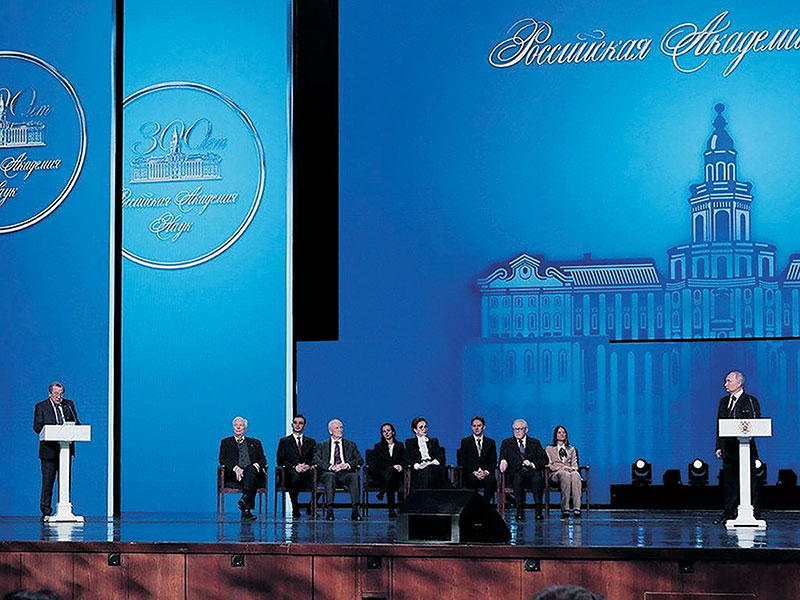
Today is no ordinary day for our country: the Russian Academy of Sciences celebrates its anniversary — it turns three hundred years old. This event is certainly not only of national importance but also of truly global significance and scale. Therefore, it is deservedly included in the UNESCO list of memorable dates. It is also symbolic that it is on the birthday of the Academy that we celebrate the Day of Russian Science. I congratulate you on this holiday. This is a holiday that unites the entire research community of our country.
Vladimir Putin
One of the important tasks facing the Academy is the education of scientific personnel, contributing to the creation of basic faculties in universities and research graduate schools. Interest in science is instilled from school. Thus, there are 108 basic schools of the
Russian Academy of Sciences in 32 regions of Russia, with 25,000 students enrolled. And the demand for such initiatives in society today is at a consistently high level. According to the Russian Public Opinion Research Center, 65% of parents in Russia would like their children’s careers to be connected with science.
Finally, the Russian Academy of Sciences actively cooperates with colleagues from other countries. The Academy is a member of 42 international scientific organizations. Agreements on scientific and technical cooperation have been signed with 21 foreign academies of sciences. Cooperation with partners from the CIS, BRICS, Southeast Asia, Latin America, the Middle East, and Africa is expanding. In addition, the Russian Academy of Sciences has 439 foreign members from 55 countries.
The decision taken at the 42nd session of the UNESCO General Conference to include the 300th anniversary of the Russian Academy of Sciences in the UNESCO list of memorable dates was a great event for the scientific community. This step will make it possible to celebrate the anniversary of the Academy at the highest level and attract international attention to the activities of this unique institute.
Materials courtesy Press Service of the Russian Academy of Sciences

